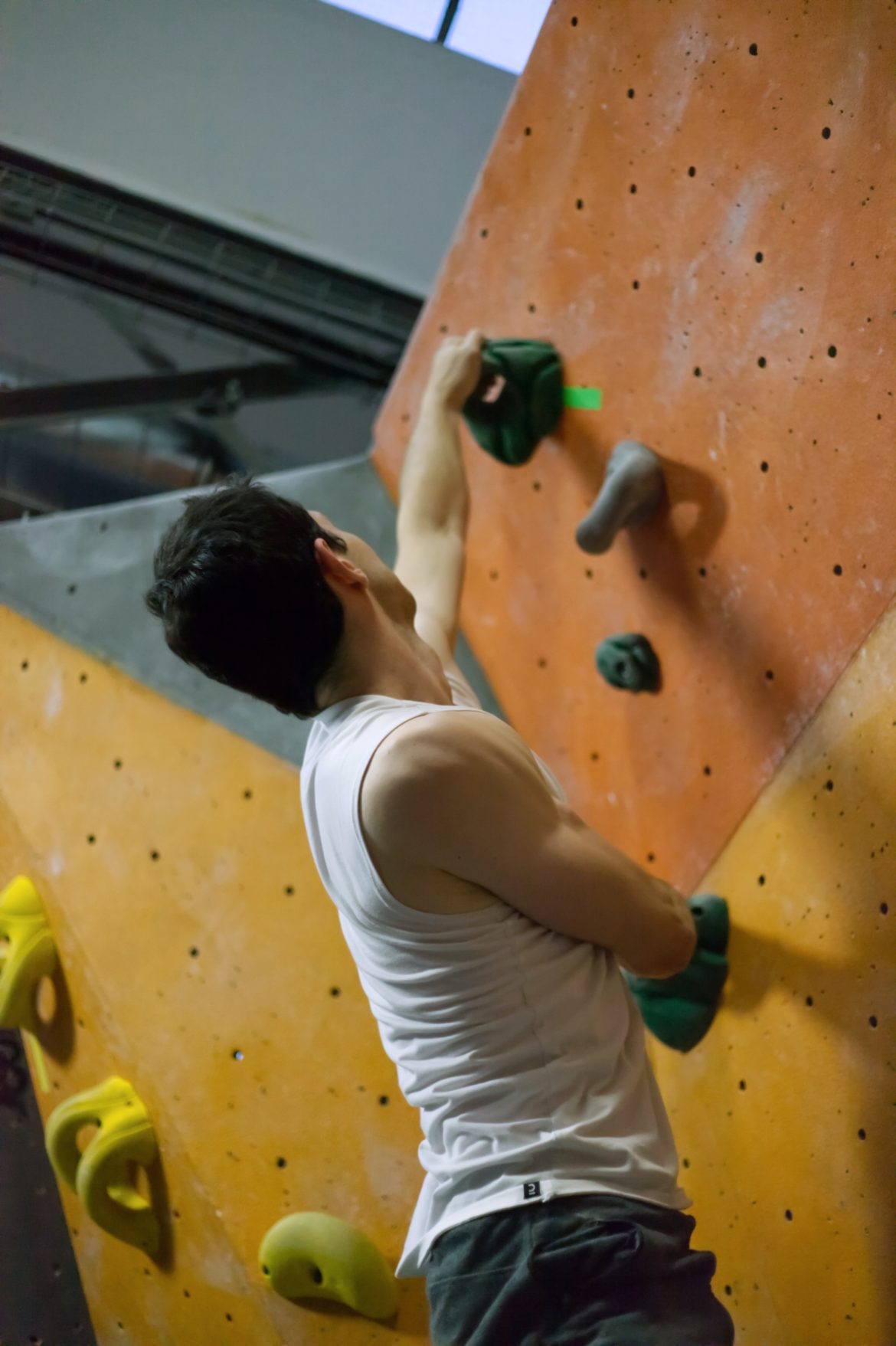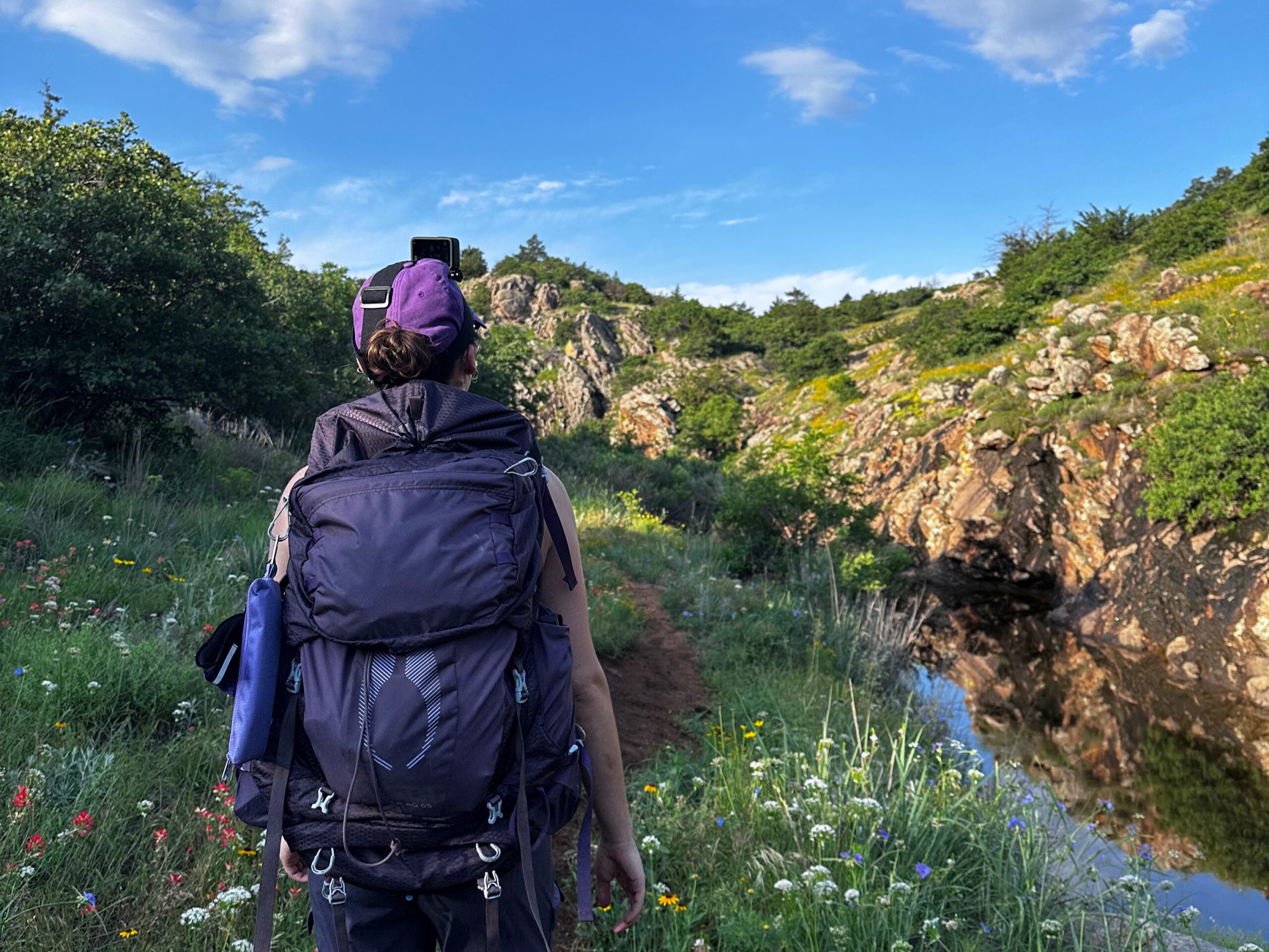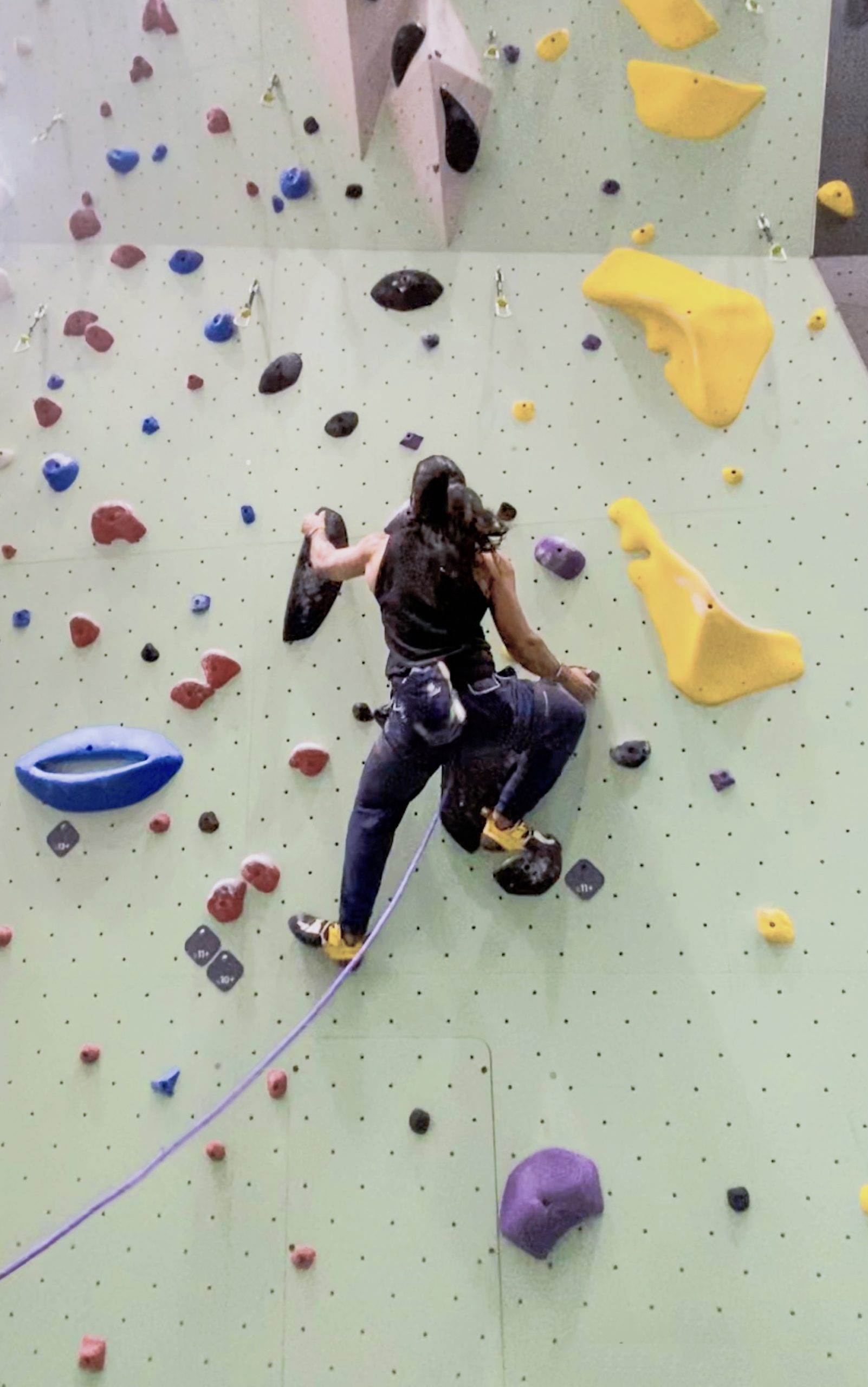Climbing as a recreational sport became a reality in the 1980s and has continued to grow in popularity ever since. More than 10 million people participated in rock climbing in 2020, and sport climbing was introduced as an Olympic sport that same year. There are many benefits of climbing. While climbing does attract thrill-seekers and adrenaline junkies, others appreciate it for its everyday health benefits and how much fun it can be!
Almost anyone can climb. Indoor climbing gyms provide easier access and safety measures that make it accessible to all ages, fitness levels, and abilities. Not only is it an interesting workout, but it leads to a variety of physical and mental benefits. Read on to learn why I recommend giving rock climbing a try!
1. Relieve Your Anxiety and Stress

We all live and deal with stress during our lives. We struggle with anxiety at varying levels of intensity, and it can be difficult to find ways to combat those feelings. Climbing can be a great way to shift away from that anxious state and into a more pleasant mindset.
Rock climbing does two simple things for your stress and anxiety. First, it’s a great workout. You will receive the typical chemical benefits, such as endorphins and endocannabinoids, that make you feel happier and calm. You can expect to feel better even after just 30 minutes of intense climbing. In the long term, you will also notice lower levels of stress in general.
Second, climbing allows you to focus on something separate from the rest of your life. It is just challenging enough that it demands your full attention. Not only do you need to be aware of how your body is positioned at all times, but you have to consider each move as you climb up the wall. For someone who combats negative thoughts, escaping into your climbing can be a huge relief. Of course, climbing is not therapy. However, climbing regularly can boost your feel-good chemicals and distract you from everyday worries.
2. Increase Your Muscle Strength

Think about what muscles are used while climbing. At first glance, it’s your finger muscles, forearms, biceps, lats, and other back muscles. However, every veteran climber will tell you that real climbing strength comes from the legs. You can absolutely muscle through with your upper body for the first few grades, but once you get to a certain point – lower body and core strength are crucial for your success.
When you start climbing consistently, you’ll notice a dramatic increase in finger and forearm strength over the first few months. The increase in strength won’t stop there. Climbing is a full-body exercise. Core strength is especially appreciated when dealing with overhangs, and you’re sure to appreciate strong legs when you need to power yourself up to the next handhold.
3. Improve Your Flexibility and Balance
Climbing requires you to be able to position your body in a way that keeps you on the rock. As your core becomes stronger and your limbs more flexible, you’ll be able to pull off more difficult moves. You need good body awareness to avoid falling out of an unusual position, for example. Increased flexibility will allow you to reach farther and stretch further as you reach higher.
If you’ve watched competitive climbing (particularly bouldering), you already know that the world’s best climbers are extremely flexible and in control of their bodies. They can balance all of their weight on one hand if the route demands it. Research shows that flexibility is key for climbers. But you don’t need to concern yourself entirely with finding a cross-training exercise to gain that flexibility – climbing will do that for you. That’s not to say that stretching in between sessions isn’t helpful – it is. Improving in this area is just one more of the benefits of climbing. No matter what, you will see improvements in your range of motion and balance when you climb.
4. Become a Better Problem-Solver

Climbing is all about puzzle-solving. Not only do you start to plan ahead when you look at the route from the ground, but you also need to problem-solve on the fly as you climb. The handholds and footholds often feel different from how they look, so you learn to maneuver these obstacles with quick thinking. Activities such as climbing have been shown to improve working memory by 50%.
A great thing about rock climbing is that you can make it your own. Although there are specifically-marked routes (especially in indoor climbing gyms), every single person will put their own spin on how they solve the problem. If you’re on the shorter side, you will climb completely differently from someone who is taller. You will develop your own creative climbing style! In effect, climbing enhances both sides of the brain all at once.
5. Enhance Your Cardiorespiratory Fitness

Not only is climbing a full-body strength workout, but it’s a highly effective form of cardio. Indoor rock climbing has been found to require the same amount of energy as it takes to run about ten minutes per mile (1.6 km). On average, that means you’re burning 600 calories an hour.
Many high-impact workouts such as running, soccer, or gymnastics are also heavy on cardio. In contrast, rock climbing is low-impact. The goal is to have control over your body at all times. While sometimes, yes, you will need to make big dynamic movements – most of the time the exertion comes from pulling yourself steadily up against gravity. Your muscles will be pushed to their limits keeping you off of the ground, so your heart will be working overtime to pump oxygen everywhere it needs to be. It’s a refreshingly exciting aerobic workout.
6. Meet New People and Build Community
The climbing gym is a great place to meet new people. You’ll begin to see the same people every time your climb – more so if you stick to a schedule. Climbing problems are some of the best conversation starters in the world. Once you find someone working on the same route as you, it’s easy to ask them for their thoughts on how to solve the problem. Before you know it, you’re friends. After a while, groups form and you’ll have half a dozen climbing buddies that you talk to regularly. This is just another of the benefits of climbing that makes it worth a try.
7. Boost Your Confidence

When you first start climbing, it can be intimidating for sure. Your initial attempts will feel awkward and unsure. The good news is that everyone else has felt the same way. They get it – the fear of falling, feeling not strong enough – and they still have off days every once in a while. Feeling like a novice is allowed; it’s completely normal! You’ll look back in a few months and realize just how much you’ve grown.
Personally, I feel amazing at the end of most climbing sessions. I’m tired and messy, but I also tried a lot of new routes and made progress on at least one. Sure, there are bad days, but the good days make you realize that climbing is a more than worthwhile use of your time.
How to Get Started with Rock Climbing
Now that I’ve convinced you with a multitude benefits of climbing, here’s my short list of steps to take to get yourself climbing in no time:
- Check out your local climbing gym (most provide rental gear and safety lessons).
- Invite a friend to go with you.
- Once you’ve decided to commit – buy your gear (shoes and chalk, maybe a harness). Check out my favorite climbing shoes – the SCARPA Instinct VS.
- Enjoy learning a new skill – beneficial for both your body and mind.
To learn more about self-care and staying active, click here.



